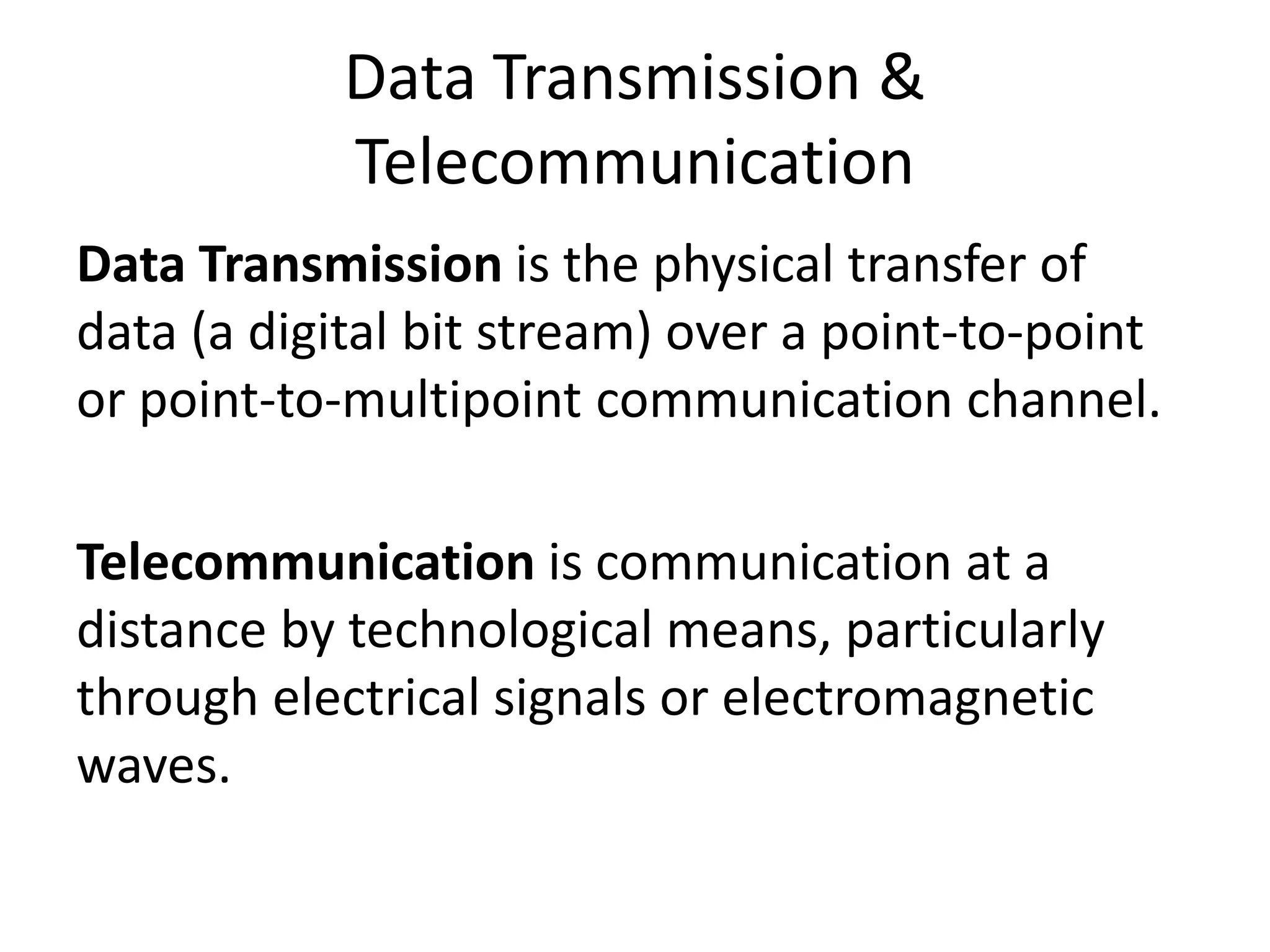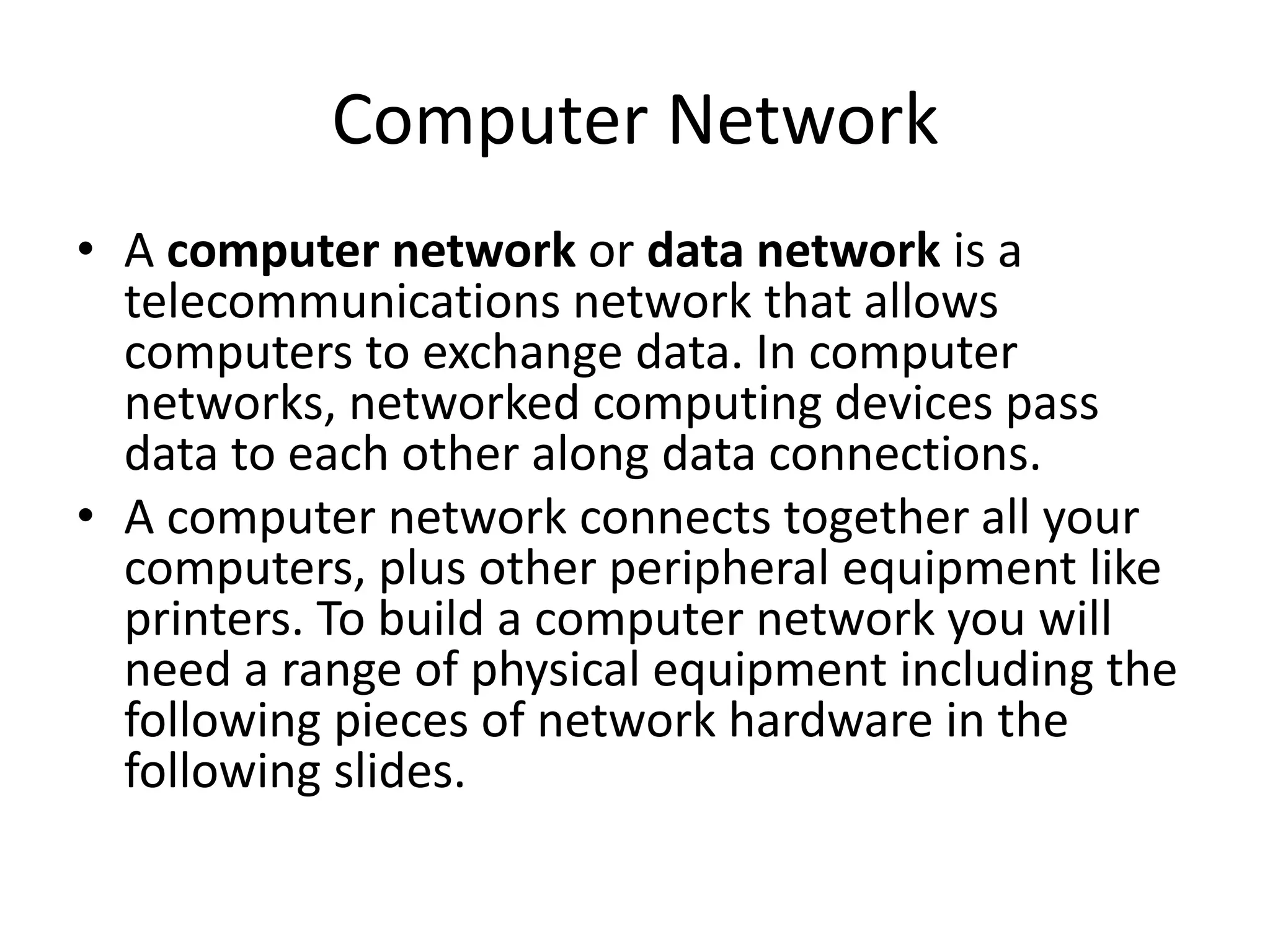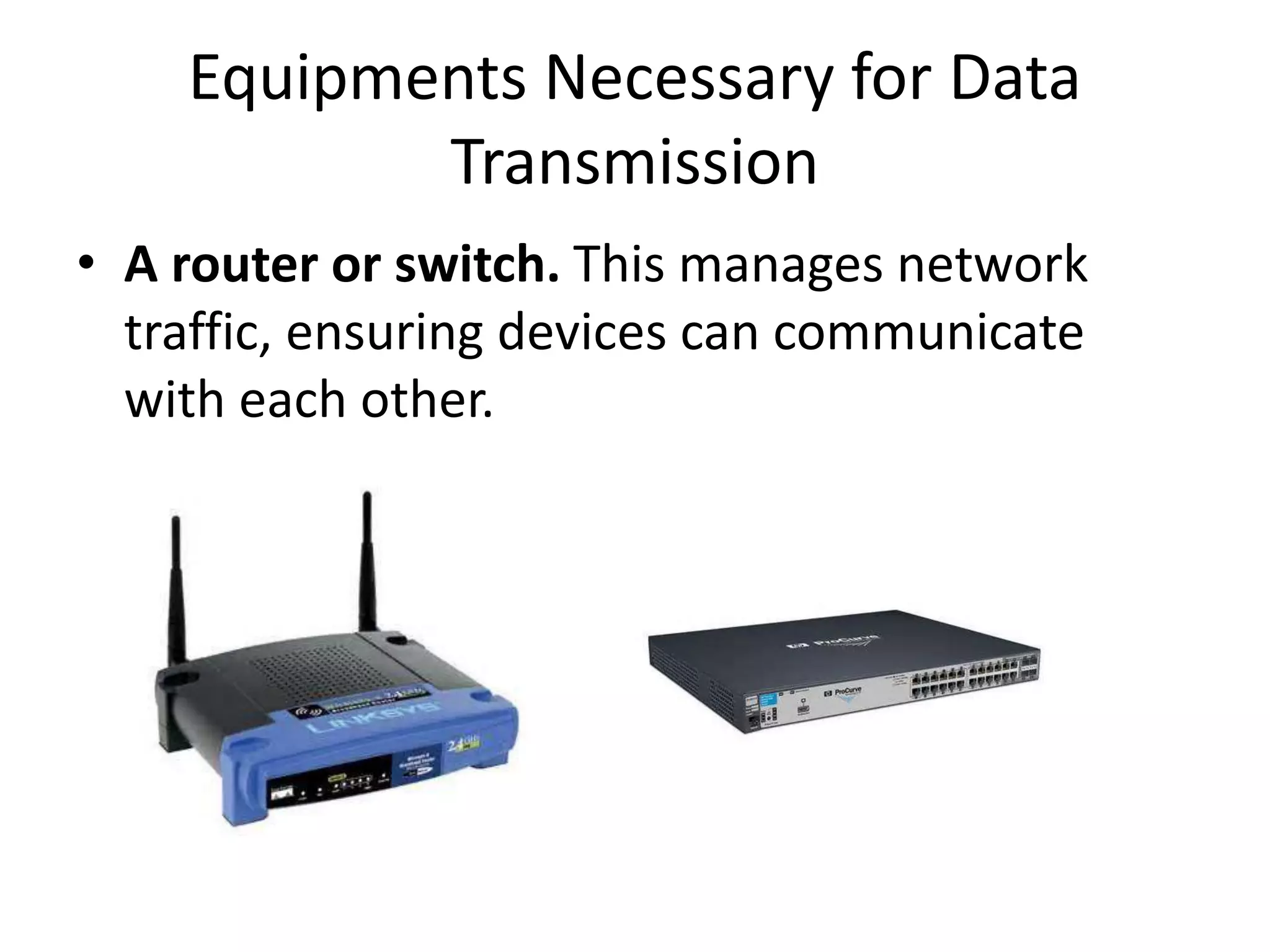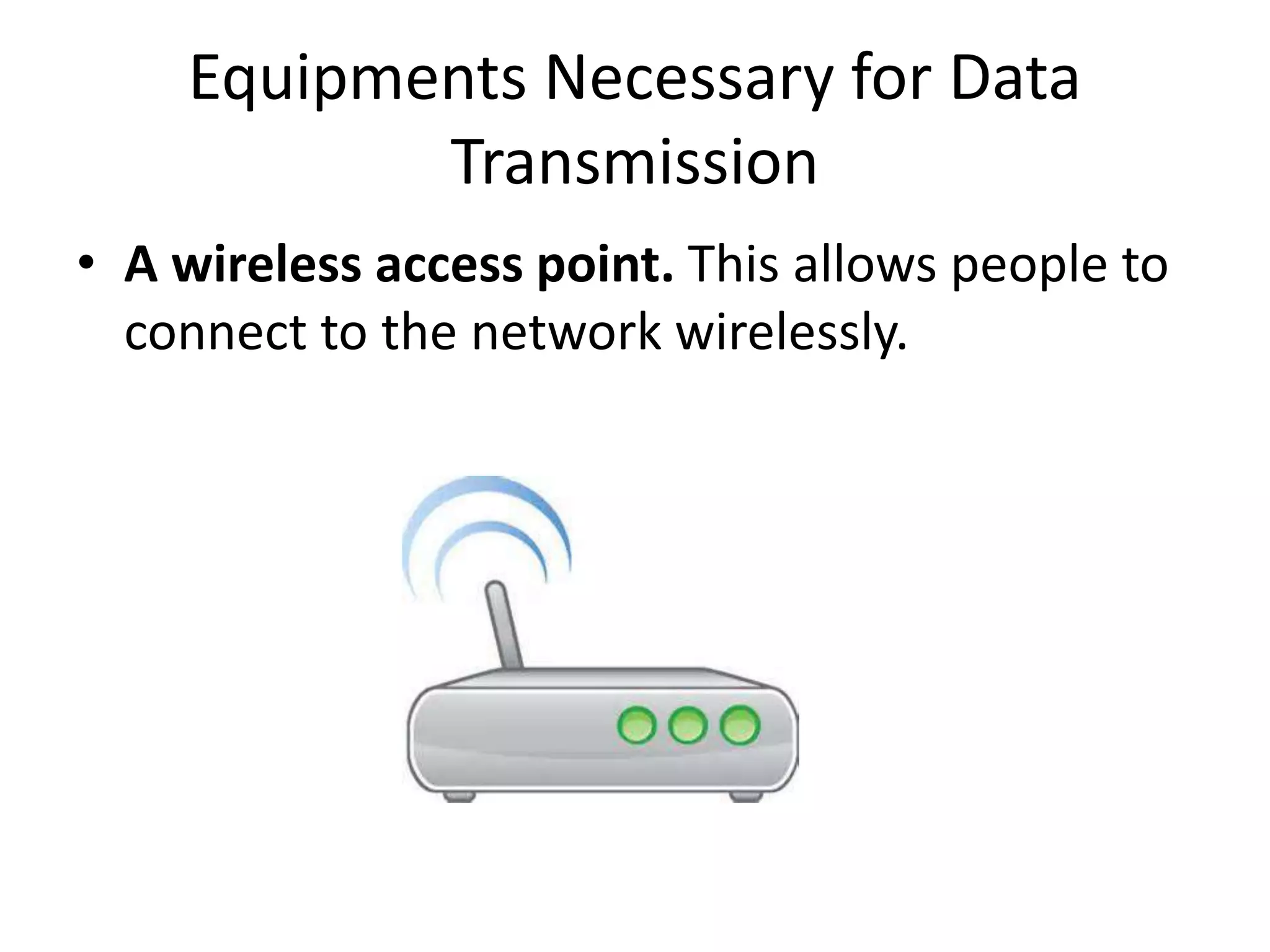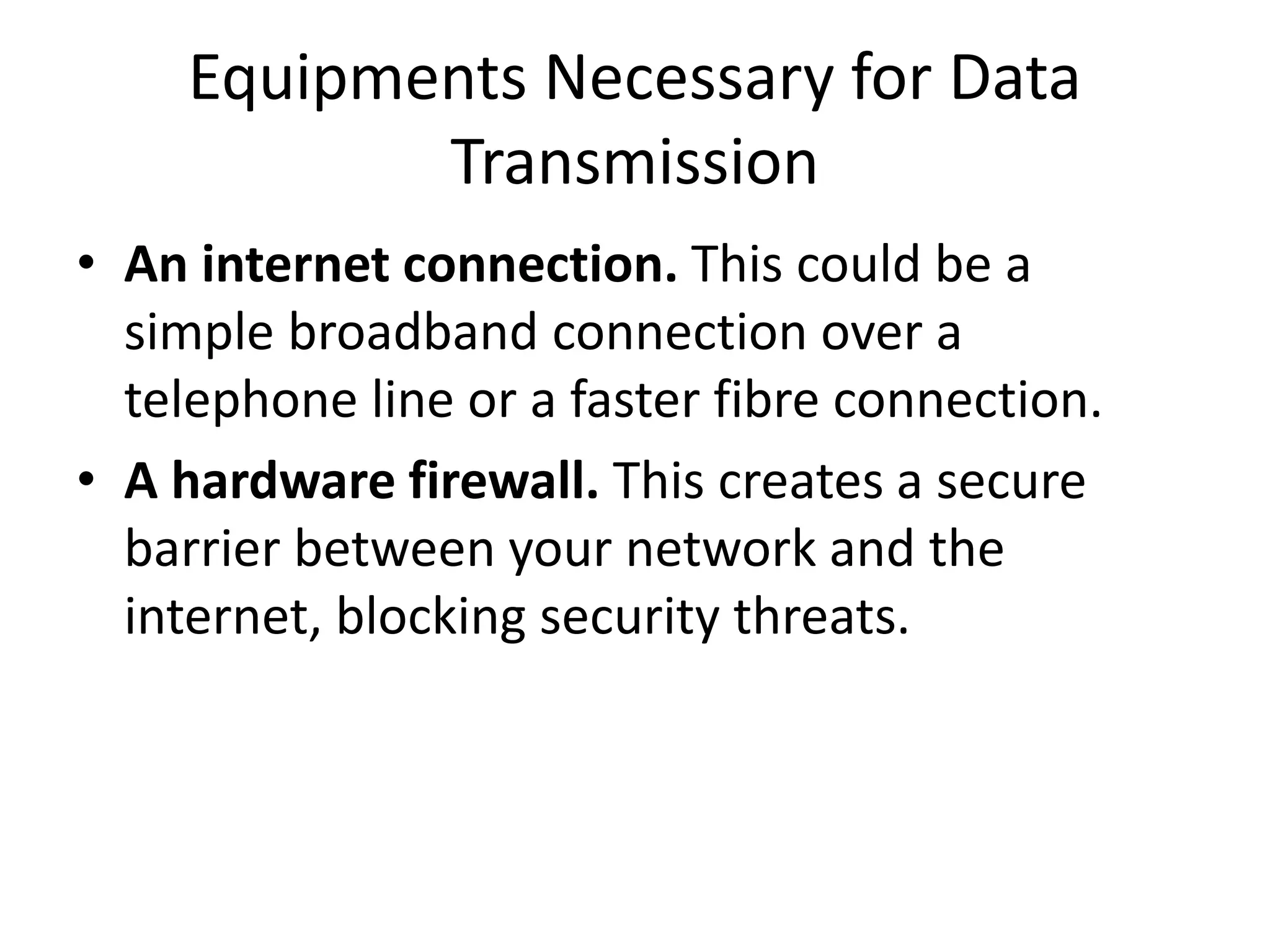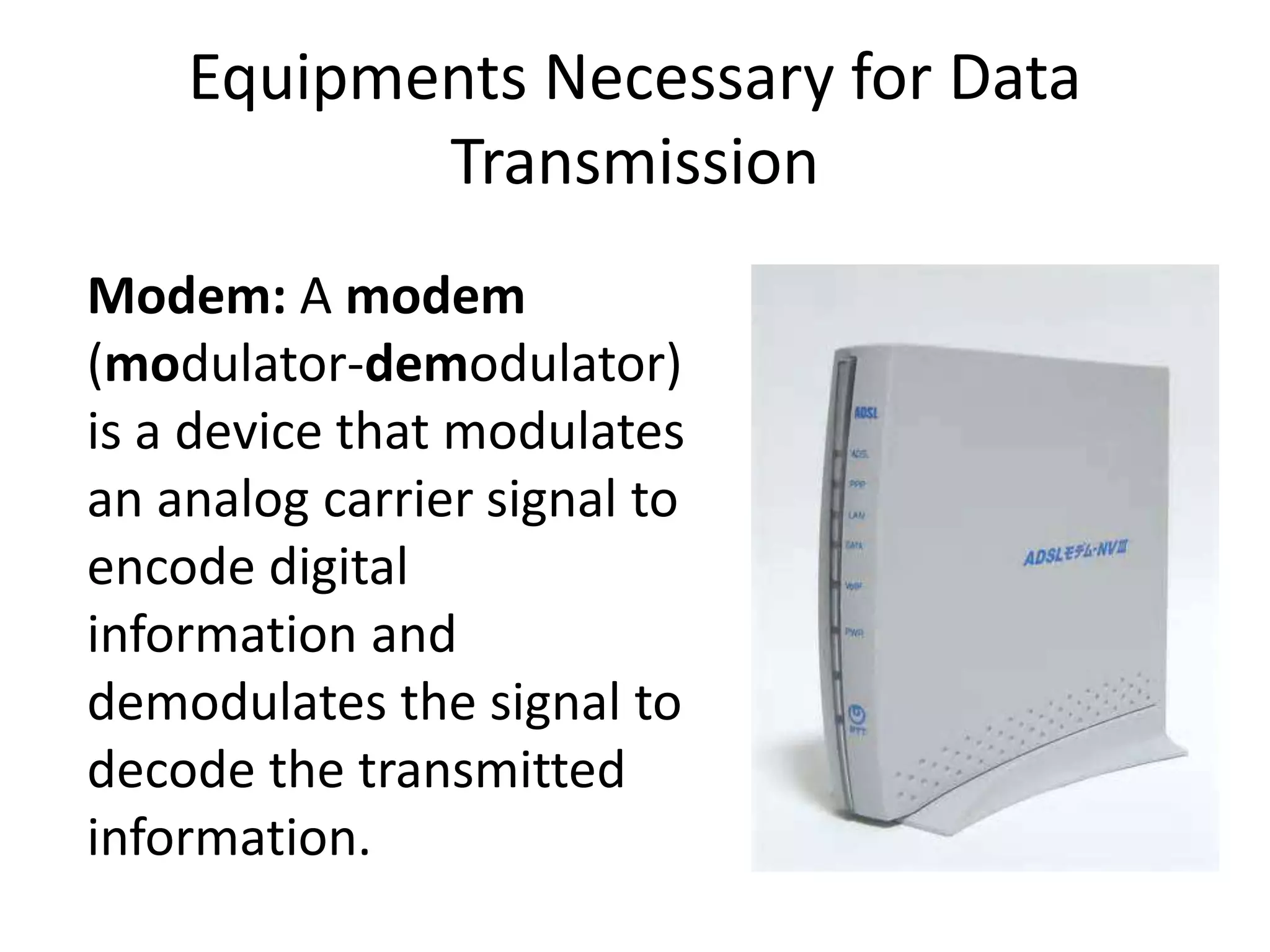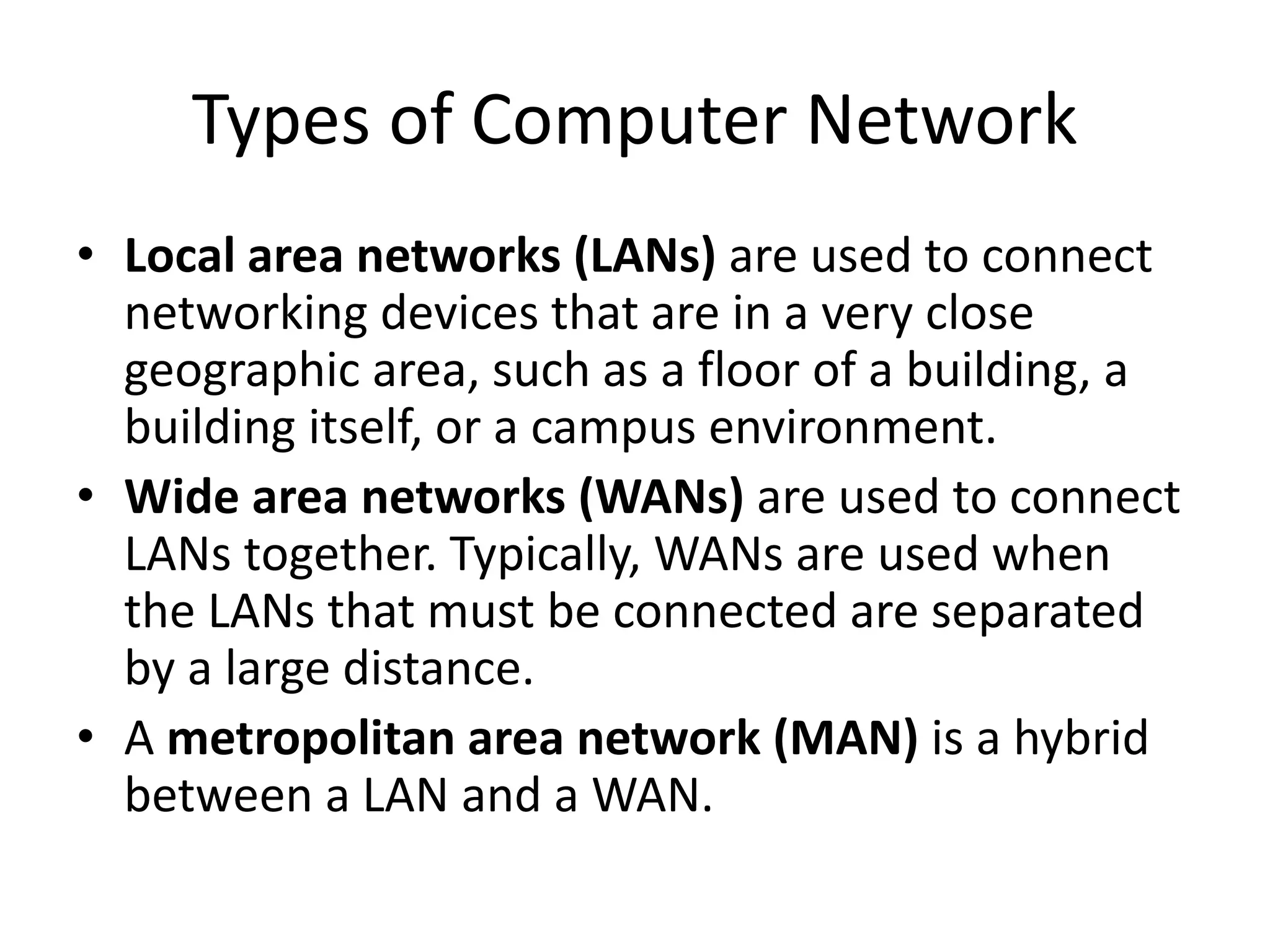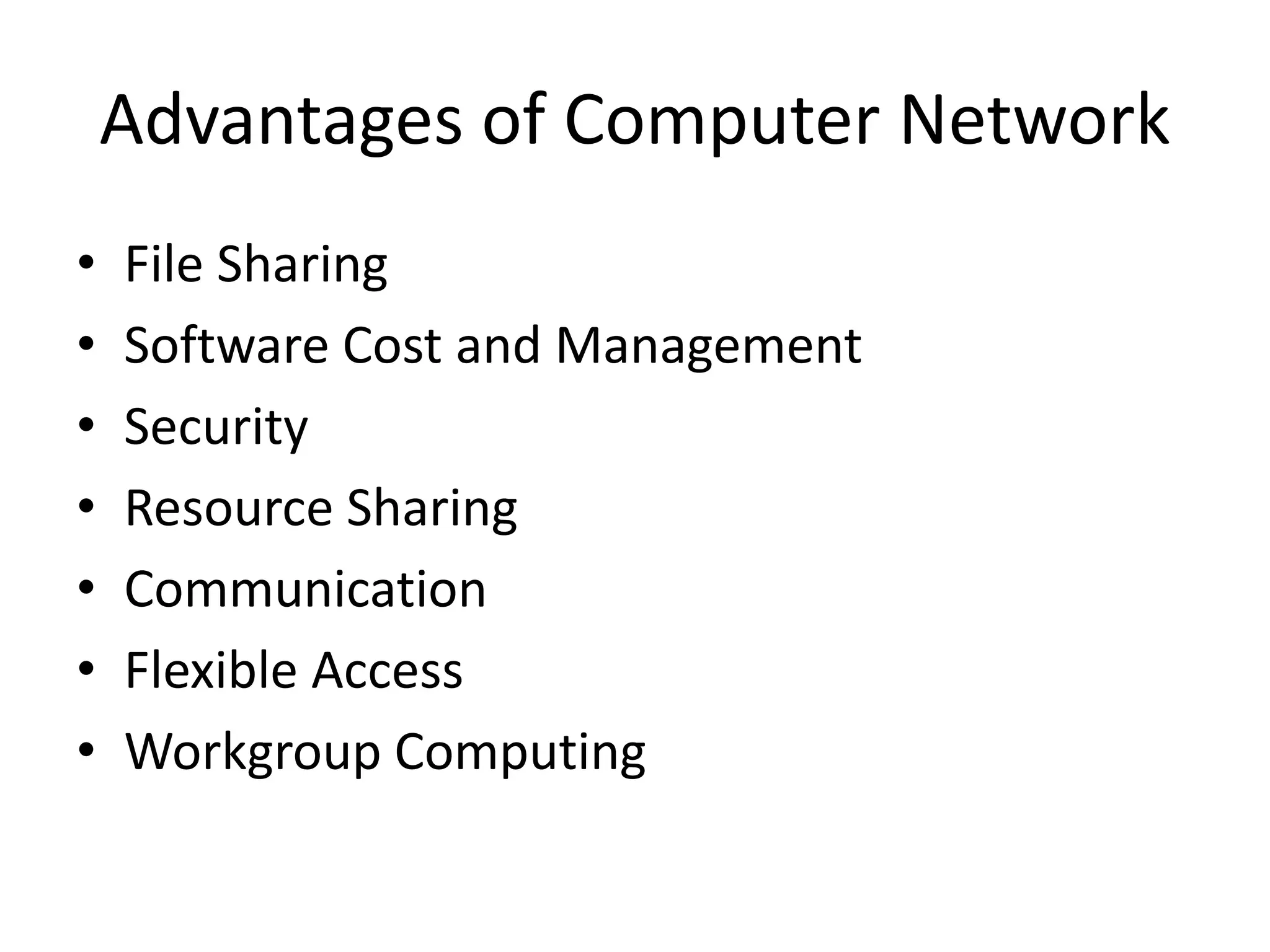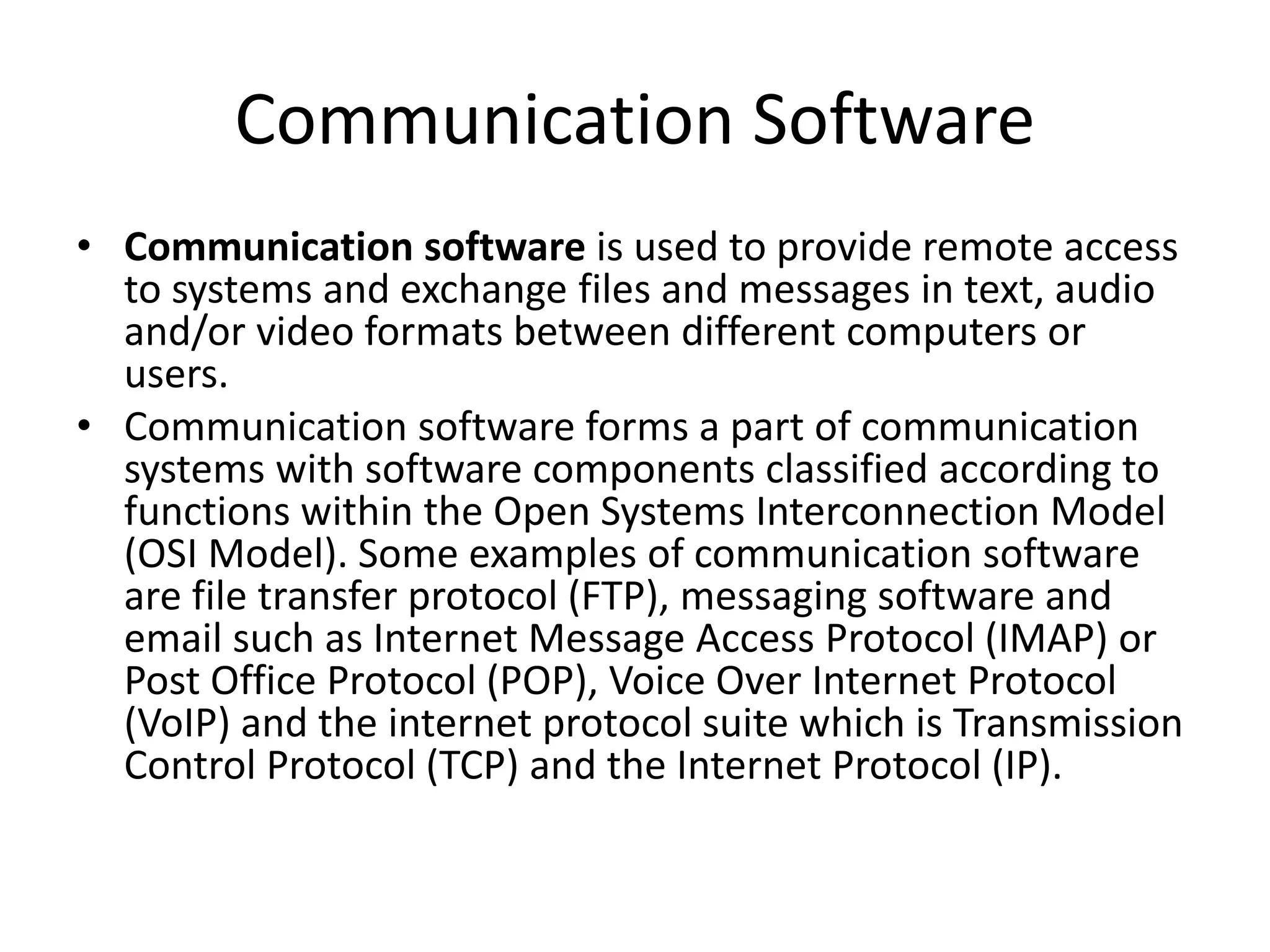This document discusses data transmission and computer networks. It defines data transmission as the transfer of digital data over communication channels and telecommunication as communication at a distance using technology. A computer network allows devices to exchange data by connecting them with cables, routers/switches, wireless access points, network cards, modems and an internet connection. Networks can be local area networks within a building, wide area networks connecting multiple LANs over large distances, or metropolitan area networks that are hybrids between LANs and WANs. The advantages of networks include file sharing, resource sharing, communication and flexible access.


